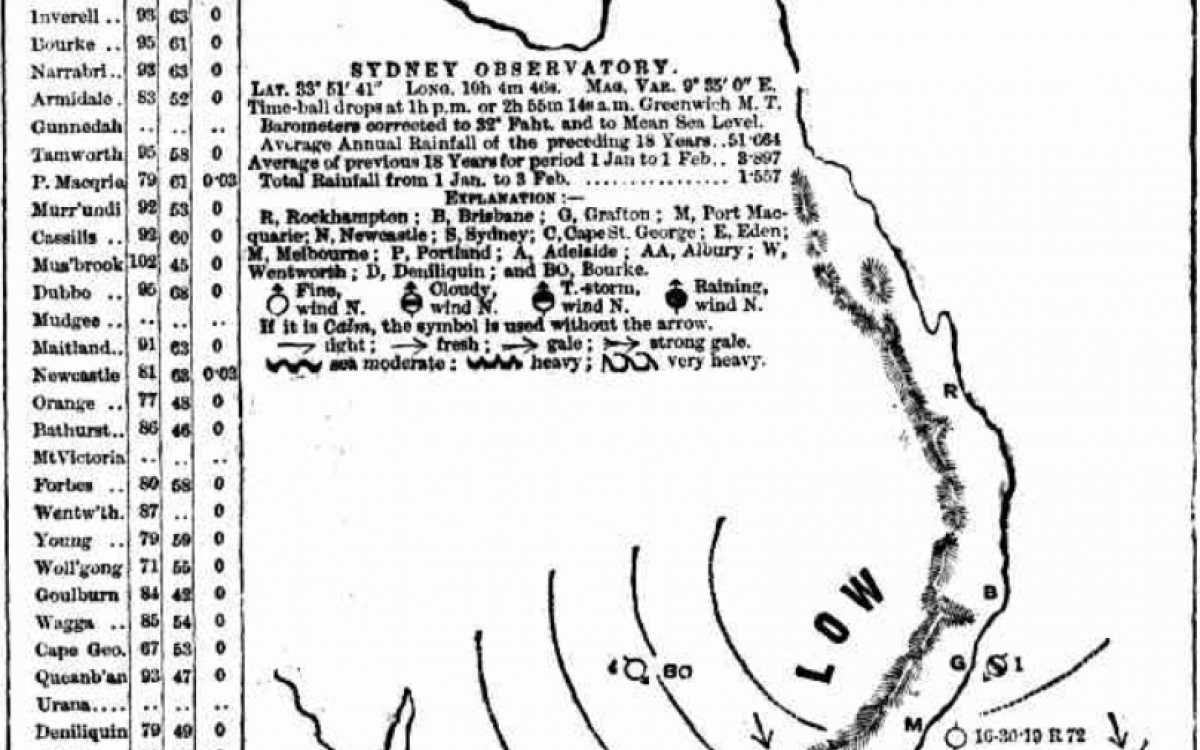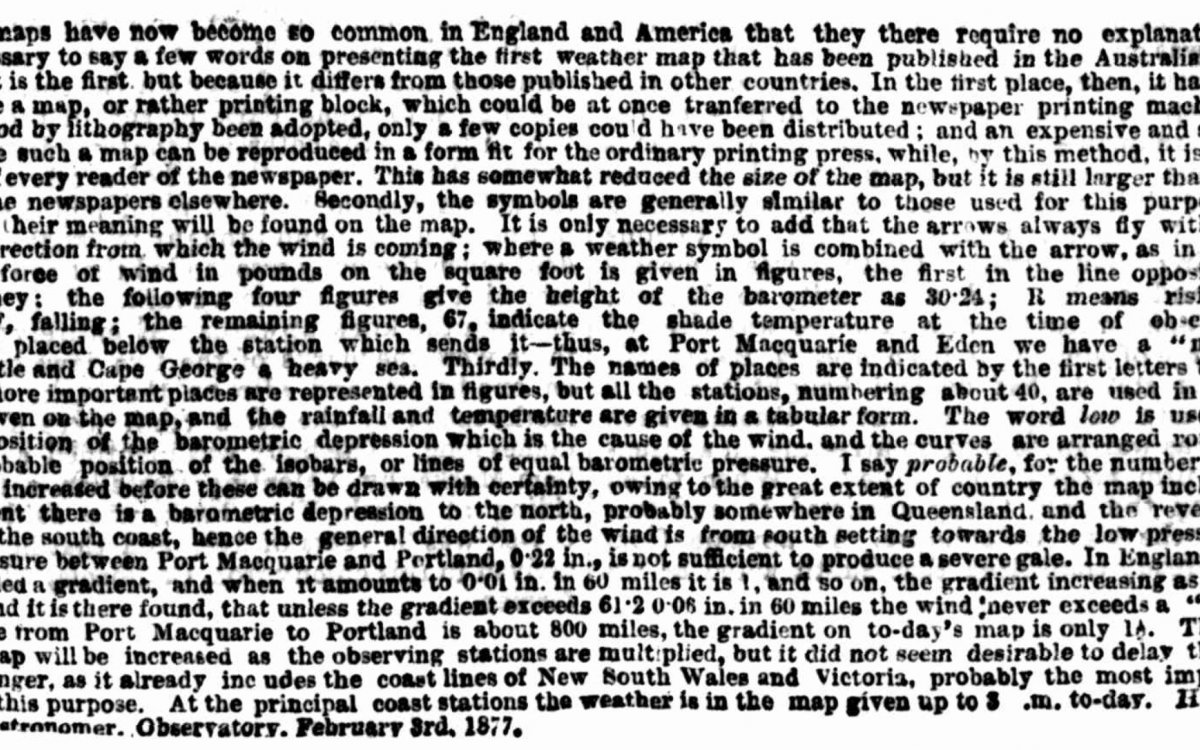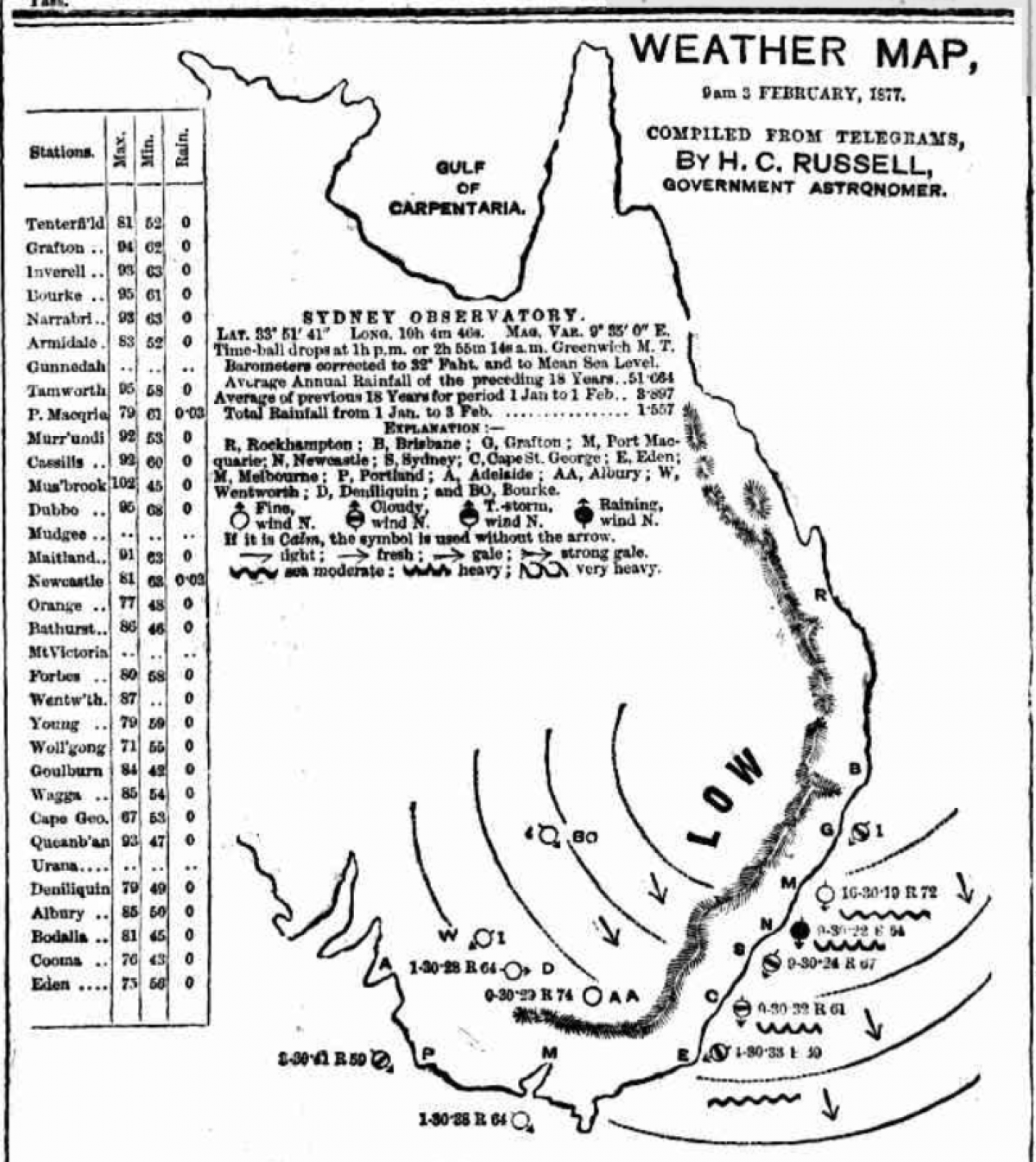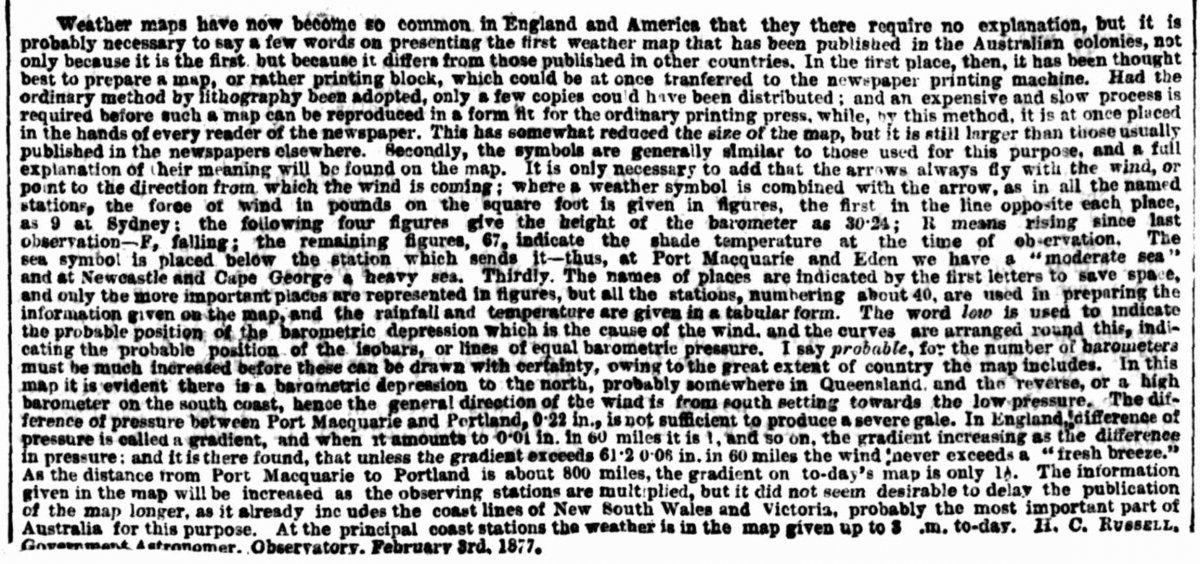
WEATHER MAP, 9 am 3 FEBRUARY, 1877. (1877, February 5). The Sydney Morning Herald (NSW : 1842 - 1954), p. 6. http://nla.gov.au/nla.news-article13389140

WEATHER MAP, 9 am 3 FEBRUARY, 1877. (1877, February 5). The Sydney Morning Herald (NSW : 1842 - 1954), p. 6. http://nla.gov.au/nla.news-article13389140
In 1877, meteorologist and astronomer Henry Russell produced the first published weather map for the colony of New South Wales. The information for the map was gathered from weather stations around the colony and combined with data gathered at the Sydney Observatory. It provided information for individual stations and towns. Isobars and other meteorological symbols were included.
Activities
Weather maps bear symbols that make them readable at a glance. The symbols indicate the place and intensity of weather systems and phenomena. A weather map is also called a synoptic chart. When shown in the media or in paper form, weather maps are called surface charts.
Work with the class on learning how to read weather maps:
- list the symbols for rain, snow, sleet and hail
- identify the symbols for high (H) and low (L) pressure systems, cold fronts, warm fronts, occluded fronts and stationary fronts. Discuss the effects these have on our experience of the weather
- research and draw the symbols for wind speed
- research and draw isobars.
Once students have built some familiarity, have the whole group construct a surface chart (on the wall) and contribute a different weather symbol. Explore your map as a group, discussing what kind of weather it might mean for the day.

